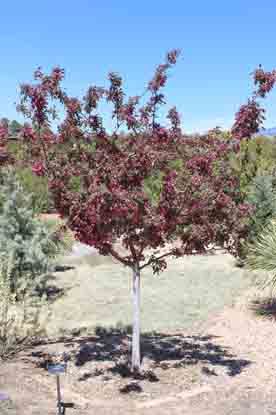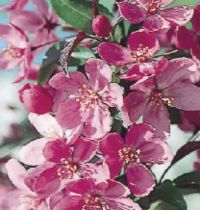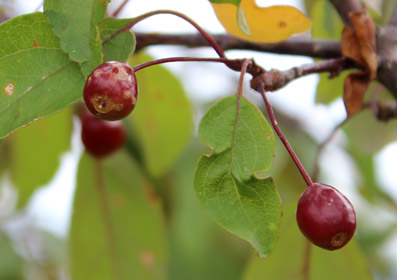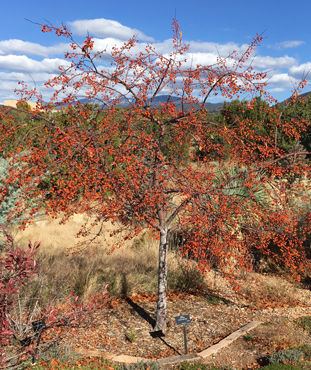The Tree
 |
 |
Tree in Flower |
Tree w/ Leaves |
The Flowers

The Fruit
 |
 |
Description
"Malus (/ˈmeɪləs/[2] or /ˈmæləs/) is a genus of about 30–55 species[3] of small deciduous apple trees or shrubs in the family Rosaceae, including the domesticated orchard apple (M. pumila). The other species are generally known as crabapples, crab apples or wild apples. The genus is native to the temperate zone of the Northern Hemisphere.
Apple trees are typically 4–12 m (13–39 ft) tall at maturity, with a dense, twiggy crown. The leaves are 3–10 cm (1.2–3.9 in) long, alternate, simple, with a serrated margin. The flowers are borne in corymbs, and have five petals, which may be white, pink or red, and are perfect, with usually red stamens that produce copious pollen, and a half-inferior ovary; flowering occurs in the spring after 50–80 growing degree days (varying greatly according to subspecies and cultivar).
Apples require cross-pollination between individuals by insects (typically bees, which freely visit the flowers for both nectar and pollen); all are self-sterile, and (with the exception of a few specially developed cultivars) self-pollination is impossible, making pollinating insects essential. Several Malus species, including domestic apples, hybridize freely.[4] They are used as food plants by the larvae of a large number of Lepidoptera species; see list of Lepidoptera that feed on Malus.
The fruit is a globose pome, varying in size from 1–4 cm (0.39–1.57 in) diameter in most of the wild species, to 6 cm (2.4 in) in M. sylvestris sieversii, 8 cm (3.1 in) in M. domestica, and even larger in certain cultivated orchard apples. The centre of the fruit contains five carpels arranged star-like, each containing one or two seeds." (Wikipedia)
Internet Resources